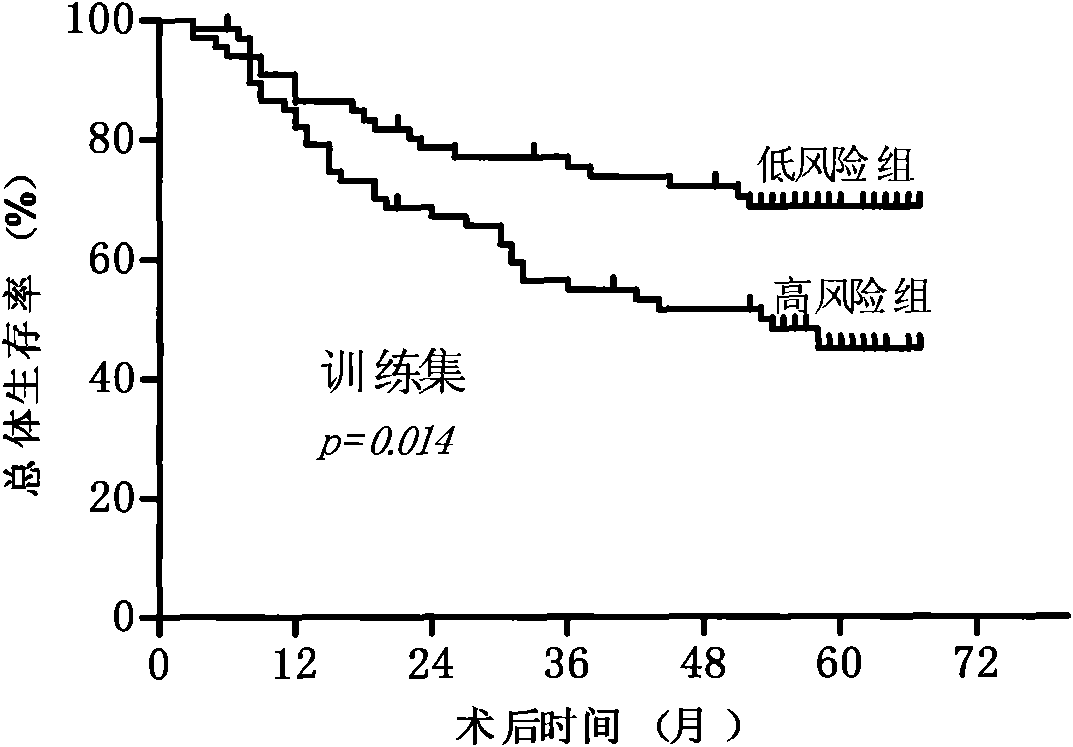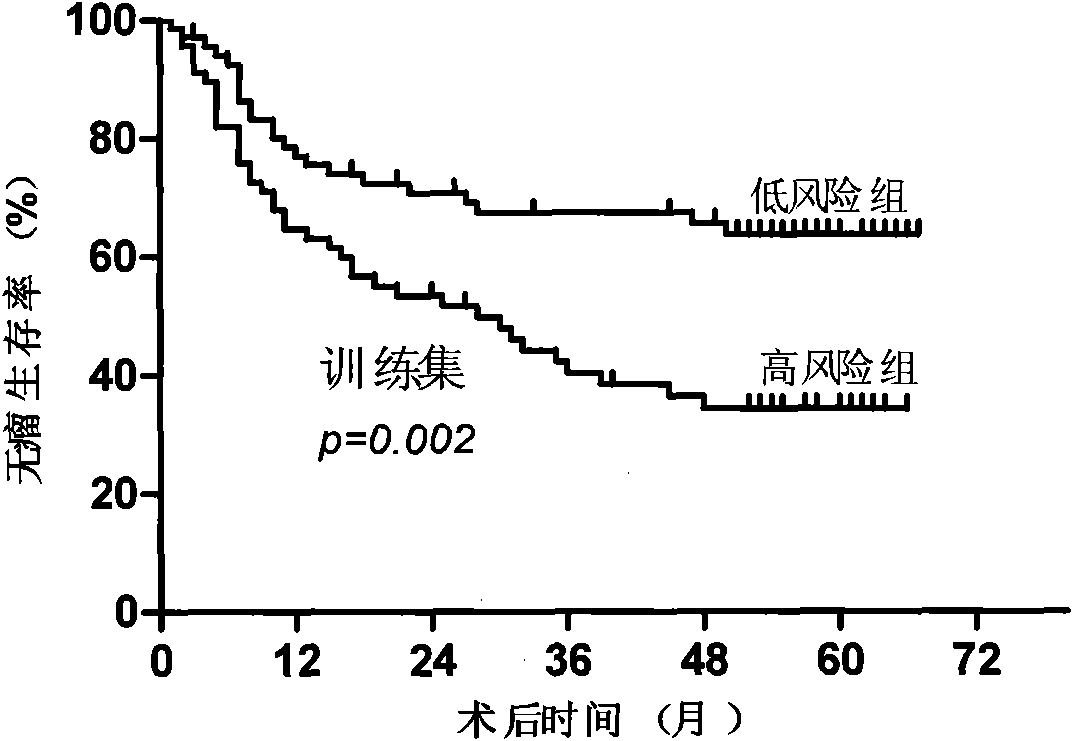Gene chip of prediction of recurrence after hepatocellular carcinoma operation
A technology of hepatocellular carcinoma and gene chip, which is applied in the field of gene chip for predicting recurrence of hepatocellular carcinoma after operation, can solve problems such as unreported, and achieve the effects of easy popularization and application, simple method, and accurate diagnosis and prediction.
- Summary
- Abstract
- Description
- Claims
- Application Information
AI Technical Summary
Problems solved by technology
Method used
Image
Examples
Embodiment
[0016] A gene chip for predicting postoperative recurrence of hepatocellular carcinoma, with EPAS1, JMJD1C, NEDD9, EPC2 and USP36 genes as detection sites, β-actin as internal reference, and the primers shown in the following table as detection probes. A copy of the reading form is attached:
[0017] gene name
Upstream and downstream primer sequences
size
EPAS1
F: 5'TGCTACGCCACCCAGTACCA3'
R: 5'CAGTTCGGGCAGCAGGTAGG3'
111bp
JMJD1C
F: 5'CAGCGGGAGCACTTCATCATCAG3'
R: 5'TTCCTTCAAAAGTCTCAGTTCCTGTG3'
125bp
NEDD9
F: 5'CCCAAACCGAAGTCATAGCC3'
R: 5'CAGGAACAGCCACCAATAAGC3'
154bp
USP36
F: 5'CGAAGAGTTTGACCGAGGGAAG3'
R: 5'GCAGCCTTTGCTGGGTGAGT3'
132bp
EPC2
F: 5'CATTTGGGAGACTATGGTGGT3'
R: 5'CTCTGCTTTAGGCTTCTTTGG3'
213bp
β-actin
F: 5'AAGAAGGTGGTGAAGCAGGC 3'
...
PUM
 Login to View More
Login to View More Abstract
Description
Claims
Application Information
 Login to View More
Login to View More - R&D
- Intellectual Property
- Life Sciences
- Materials
- Tech Scout
- Unparalleled Data Quality
- Higher Quality Content
- 60% Fewer Hallucinations
Browse by: Latest US Patents, China's latest patents, Technical Efficacy Thesaurus, Application Domain, Technology Topic, Popular Technical Reports.
© 2025 PatSnap. All rights reserved.Legal|Privacy policy|Modern Slavery Act Transparency Statement|Sitemap|About US| Contact US: help@patsnap.com



